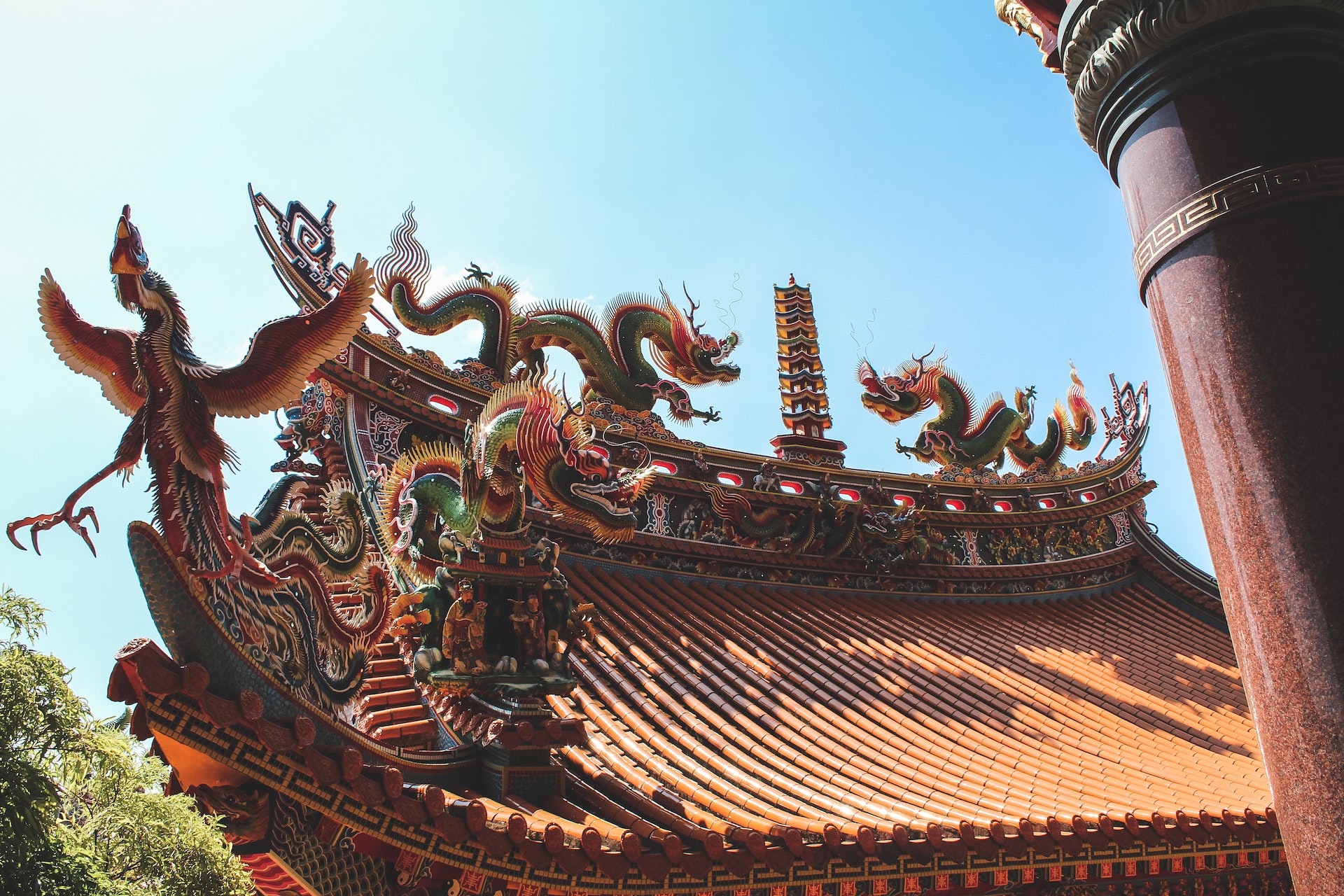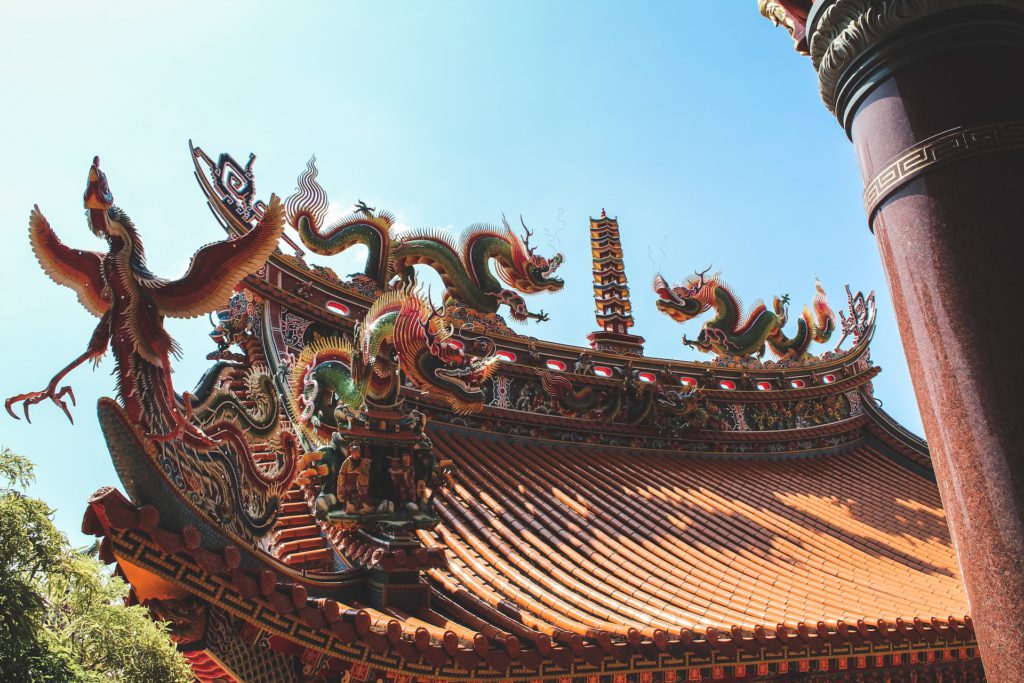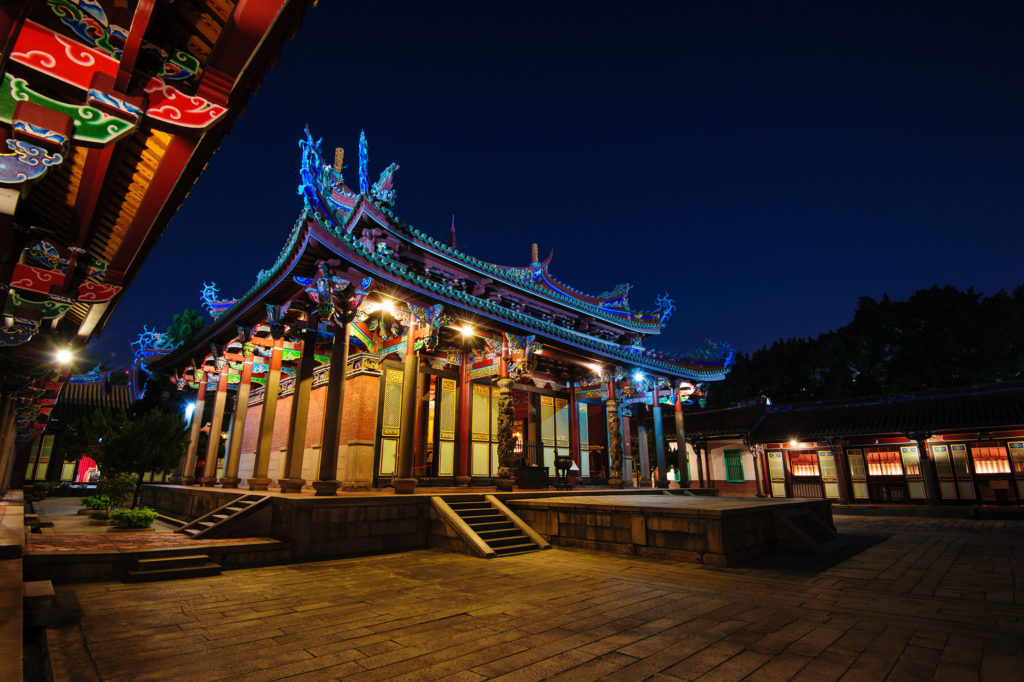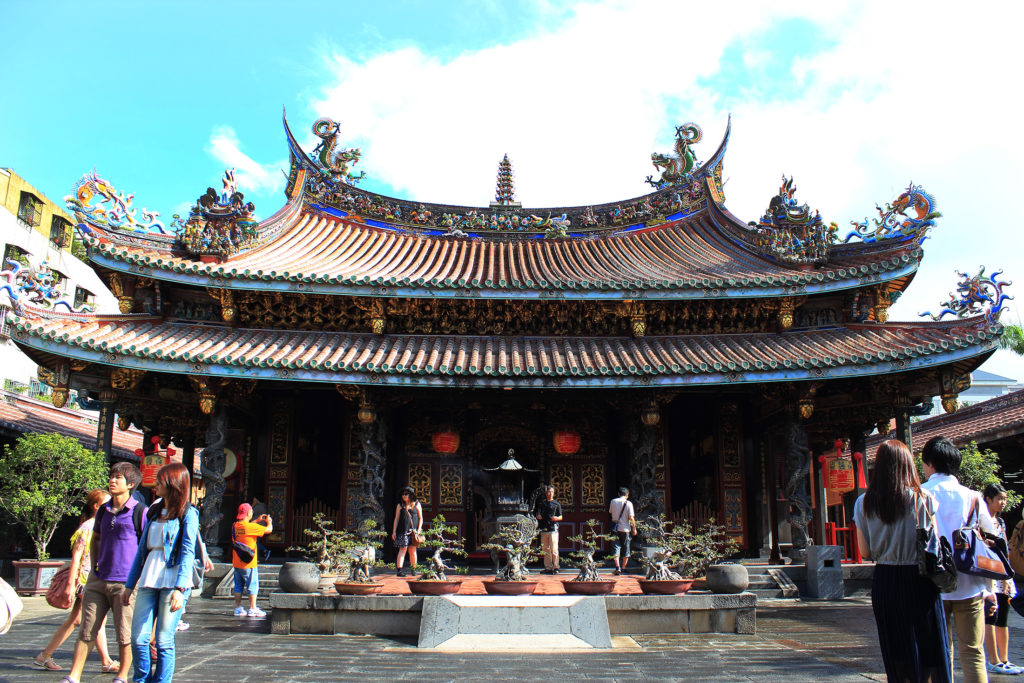
People visit Taiwanese temples for a variety of reasons, ranging from religious devotion to cultural exploration and seeking blessings. Join our Religious Day Tour, “Oh My God,” and we will take you to see the beauty of Taiwanese temples!
We go to temples to express our religious beliefs and seek blessings from the deities. Taiwan has a diverse range of religious practices, including Buddhism, Taoism, and folk beliefs, and temples serve as places of worship for these traditions. (Read more:【Taipei Day Tour】Monga, Where the Story of Taipei Begins)
Taiwanese temples also showcase the country’s rich cultural heritage. You can learn about traditional architecture, intricate carvings, and artistic decorations that are reflective of historical and artistic styles. Many temples in Taiwan are visually stunning, featuring intricate artwork, colorful decorations, and unique architectural designs. Additionally, photographers and art enthusiasts visit these temples to capture their beauty and cultural significance.

Some people visit temples with specific wishes or goals in mind, such as passing exams, finding a partner, or overcoming challenges. They believe that by praying and making offerings, they can increase their chances of success. Taiwan is home to numerous beautiful and historically significant temples that offer you a glimpse into the island’s rich cultural and religious heritage. Some of the famous Taiwanese temples you might consider visiting include:
Longshan Temple (龍山寺):
Longshan (Lungshan) Temple is one of the oldest and most well-known temples in Taiwan. It’s dedicated to various deities and features intricate architecture and stunning artwork. (Read also:【Taipei Day Tour】 Cultural Heritage of Dihua Street and Wanhua)
Longshan Temple was originally built in 1738 during the Qing Dynasty by settlers from Fujian, China. It has since undergone several renovations and restorations, with the most recent one in the 20th century. The temple was constructed as a place of worship for various deities, including Guan Yin, various Taoist gods, and goddesses. Over the years, the temple has endured fires, earthquakes, and other challenges, but it has managed to survive and remain an important cultural and religious site.
Architectural Features: The temple features a combination of ornate carvings, colorful decorations, and intricate sculptures, all of which showcase the artistic prowess of the craftsmen who worked on it. The main hall of the temple is adorned with depictions of deities and scenes from Buddhist and Taoist mythology. Additionally, the roof is adorned with decorative figures, including dragons, lions, and other mythical creatures.
Confucius Temple (台北孔子廟):
This temple is dedicated to Confucius, the ancient Chinese philosopher. It’s a serene place of worship and learning, surrounded by traditional architecture and peaceful gardens.
The temple was originally constructed in 1879 during the Qing Dynasty as a place to honor Confucius, who is highly regarded as a great teacher, philosopher, and scholar. The temple was designed and built according to traditional Chinese architectural principles, reflecting the importance of Confucianism in Chinese culture.
Architectural Features: The architecture of the Taipei Confucius Temple is a stunning example of classical Chinese temple design. Key features of the temple’s architecture include:
- Main Gate (大成門 – Dacheng Gate): This gate marks the entrance to the temple complex and is often adorned with intricate carvings and decorative elements.
- Main Hall (大成殿 – Dacheng Hall): The main hall is where the statue of Confucius is enshrined. The hall’s layout and decoration are designed to pay homage to Confucius’ teachings and philosophy.
- Side Halls: Surrounding the main hall, there are several side halls dedicated to Confucius’ disciples and other important figures in Confucian thought.

Xingtian Temple (行天宮):
Xingtian Temple is dedicated to Guan Yu (關羽), also known as Xingtian Temple of Prosperity, or Xingtian Temple of Heaven. It’s popular among locals and tourists alike and is known for its bustling atmosphere and devotion.
The temple was founded relatively recently in 1967, compared to some of the older temples in Taiwan. It was established in response to a vision that a spiritual figure had of a deity named Guangong (Guan Yu), who indicated that a temple should be built to honor him. Furthermore, Guan Yu is a revered historical figure and a deity known for loyalty, righteousness, and protection. He is often depicted as a general holding a halberd and is considered a symbol of loyalty, bravery, and righteousness. Devotees visit the temple to seek protection, blessings for success, and assistance in overcoming challenges.
Architectural Features:
- Red and Gold Colors: The temple is characterized by its vibrant red and gold color scheme, creating a visually striking appearance.
- Impressive Statues: A large statue of Guangong stands prominently within the main hall. The statue is often accompanied by other deities associated with wealth, prosperity, and success.
- Bell Tower: Xingtian Temple is known for its large bell, which visitors can ring to seek blessings and good luck.
Ciyou Temple (慈祐宮):
Ciyou Temple is known for its mix of architectural styles, blending traditional Chinese temple design with Western elements. It’s dedicated to the goddess Mazu (媽祖), the protector of fishermen and sailors.
Ciyou Temple has a history dating back to the Qing Dynasty (mid-18th century). It was initially established by Hoklo (Taiwanese) settlers who sought the protection of Mazu during their maritime activities. Over the years, the temple has been renovated and expanded to its current form.
Architectural Features: The main hall enshrines the statue of Mazu. The statue is often adorned with elaborate clothing and jewelry, and it reflects the goddess’s compassionate and protective nature. The temple is known for its intricately carved dragon and phoenix pillars, which symbolize auspiciousness and power. Additionally, the rooftop of Ciyou Temple is adorned with ornate dragon and phoenix roof decorations, which are visually striking and reflect traditional Chinese architectural symbolism.
Dalongdong Baoan Temple (大龍峒保安宮):
Baoan Temple has a long and rich history dating back to the early 18th century. It was originally built in 1760 during the Qing Dynasty and has undergone several expansions and renovations throughout the years. The temple is dedicated to the deity Baosheng Dadi (保生大帝), who is often associated with healing and medical expertise.
Architectural Features: The Baoan Temple boasts intricate architectural details that showcase traditional Chinese temple design. Some notable architectural features include:
- Main Gate (正門 – Zhengmen): The entrance gate welcomes visitors with elaborate carvings and decorative elements, often showcasing intricate artwork and symbols.
- Main Hall (大殿 – Dadian): This central hall is dedicated to the main deity, Baosheng Dadi. The hall’s design and decoration reflect the deity’s role as a healer and protector of health.
- Side Halls: Surrounding the main hall, there are side halls dedicated to other deities, such as Guan Gong (Guan Yu) and Matsu, who are also venerated in the temple.
- Courtyards and Altars: The temple complex typically features open courtyards and altars where visitors can make offerings, light incense, and engage in prayers.

Nung Chan Monastery (農禪寺):
It’s a prominent Buddhist monastery located in the Beitou District of Taipei. It is affiliated with the Chan (Zen) school of Buddhism and is known for its serene environment, spiritual teachings, and cultural contributions. (Read also:【Taiwan Family Trip】Taiwan Itinerary for Elderly and Kids)
The monastery was established in 1960 by the Venerable Master Hsing Yun, a renowned Buddhist monk and founder of the Fo Guang Shan Buddhist Order. It was built with the aim of promoting Buddhist teachings, spiritual practice, and community engagement. In addition, the Monastery follows the teachings of Zen Buddhism, which emphasizes direct insight into one’s true nature through meditation and mindfulness. The monastery offers various programs and activities to promote spiritual growth, personal development, and ethical living.
Visiting the Nung Chan Monastery offers an opportunity to experience Buddhist teachings, meditation, and a serene environment away from the bustling city. Whether you’re interested in meditation, learning about Buddhism, or simply seeking a peaceful retreat, the Nung Chan Monastery provides a space for spiritual enrichment and self-discovery.
Guandu Temple (關渡宮):
Dedicated to the goddess Mazu, the temple is known for its historical importance, religious devotion, and picturesque surroundings. It’s one of the most important temples dedicated to Mazu, the Sea Goddess, in Taiwan. Mazu is a beloved deity known for her compassionate nature and her ability to provide protection to those at sea. The temple plays a vital role in the lives of fishermen, sailors, and coastal communities, who seek her blessings for safe journeys and abundant catches.
Architectural Features: The architecture of the Guandu Temple showcases traditional Chinese temple design with distinct southern Fujian influences. In addition, one of the notable features of the Guandu Temple is its scenic location. Situated near the convergence of two rivers, the temple offers a serene environment that blends religious devotion with natural beauty. The surrounding area includes parks, gardens, and walkways, making it a popular destination for both religious activities and leisurely strolls.
Whether motivated by faith, cultural curiosity, or personal reflection, visiting Taiwanese temples offers a multifaceted experience that combines spirituality, history, art, and tradition. Try our Religious Day Tour, “Oh My God,” and we will take you to see the beauty of these Taiwanese temples!
And that’s the tea. We can also do a customized tour for you. Follow our instagram for more amazing Taiwan!!!
留言